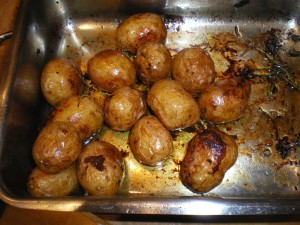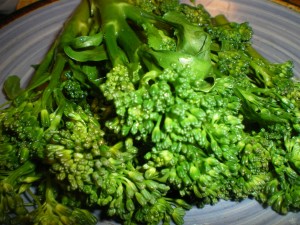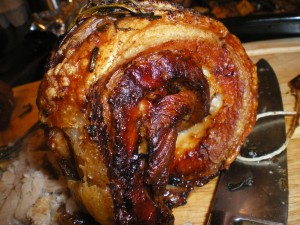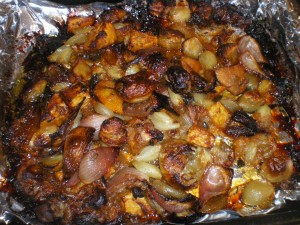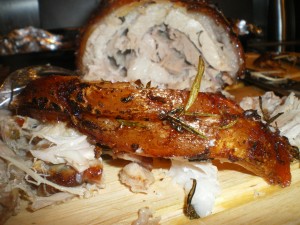Right then, I said, as I was surrounded by a tumbling wall of tinned tomatoes and beans, we really need to get through some of that store cupboard.
When I go shopping I will often pick up tins of tomatoes or beans because you can always make a meal, very quickly, from them. You never know when people may suddenly arrive and need feeding, or when you really just can’t face going to the supermarket at the end of a long day at work. I like to plan ahead – after all, what if there is a crisis and we are trapped, at the top of our apartment building, with only the contents of the kitchen? I need to be sure we can eat , at least. What if the shops are suddenly and mysteriously emptied of everything? I’d better have stuff in that won’t go off. Be prepared is my motto. The thing is, I’d kept on doing it and we were now reaching a shelf overload situation in the larder.
I’d gone into the larder to get some stuff out for baking and realised that the wild and fanciful imagined crises had not happened, unexpected guests had not turned up without warning but with an empty belly and I had managed, after all, to shop on a pretty regular basis and provide meals for the two of us without using the stores of beans and tomatoes. I noticed all that because there seemed to be a wall of tomatoes and beans blocking my way to my baking tins.
The fact that it was a pretty substantial wall, many tins deep made me think that I really ought to do something with them. The thing about beans and tomatoes is that you can do so much… the butter beans, softly mashed, make a quick and lovely alternative to mashed potato, the tomatoes can be used in the rich and soothing Tomato Rice soup or to make a ragu base for the indulgent, quick and easy lasagne, or in the vegetarian squash and goat’s cheese lasagne. The cannellini beans can be transformed into the Bear’s very favourite, Italian derived Beans on toast. I have borlotti beans and haricot beans, I have plum tomatoes and yellow tomatoes…..they were all just waiting for me. They were all just waiting to fall on me, apparently.
I decided to delay the baking session and make something to eat instead from the cans that were now falling off the shelves because I had balanced them precariously, one on top of another, after every shopping trip and then tried to shove them to one side so I could get at my shortbread mold. Falling with a clatter and bouncing off my bare feet. So… beans and tomatoes…..
Yellow tomatoes….
I’d seen these and thought I would have to try them… and now, it seemed, I was going to do it. They would be a change from the richness of red plum tomatoes…. I had some fresh sage as well.
So, two tins of cannellini beans were also removed from the now collapsed wall of tins and I looked around to see what else I had. The baking could wait for a while. I was going to make something for supper.
I love sage – not only the smell of it and the depth of flavour it adds to a dish (perfect with pork or tomatoes) but I also love the beautiful softness of its leaves and the delicate colour. All of which will disappear in cooking, I know, but I do like to rub it between my fingers and appreciate its soft silkiness and the smell as it bruises….
I had plenty of fresh garlic, too.
The first step, as with so many dishes, is to soften a chopped onion in a little oil. Adding salt makes the onion soften gently and release its flavour as it turns translucent. If you don’t add salt you are more likely to end up with bronzed, fried onions.
The next step is to open your tins of beans and rinse off the gloopy liquid surrounding them – this will be a mixture of the water they were packed in and any stray bits of starchiness from the beans themselves.
Toss the beans in the soft and glistening onions and add some chopped sage.
And then… those tomatoes. I’d not seen tins of yellow tomatoes before and I’d been curious to find out what they tasted like. They were certainly yellow. A beautiful, vibrant, cheerful yellow.
How pretty they were! They tasted nice too – sharper and yet sweeter than a tin of red tomatoes. Almost a cleaner taste in a way – you know how red tomatoes have a rich deepness to them? These seemed lighter, but just as flavourful. I added them to the beans, sage and onion.
I’d been at the Farm shop and they had been doing Italian style sausages – what this means is that they were sausages with some red wine and fennel added so I reckoned they would be perfect with my beans and tomatoes. While the beans and tomatoes cooked together, I started frying the sausages.
And look how gorgeous the beans and tomato was!
Those sausages fried beautifully, with the red wine helping make that deliciosuly sticky and brown, glistening skin.
The tomato and beans were a light and delicious mix and the perfect base to serve the sauasages on.
I fried some sage leaves separately – just quickly – until they were crisp.
It was the perfect mouthful – the softness of the beans, the sweet sharpness of the tomatoes and the meaty richness of the sausage….. Delicious. Quick, simple, inexpensive. What more could I want?
Well, I could want the larder to be tidy … but at least three tins had been removed. That’s a start, right?
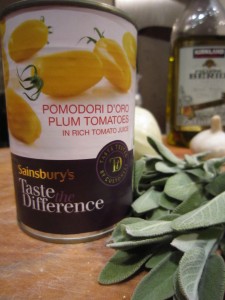
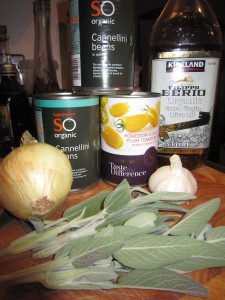
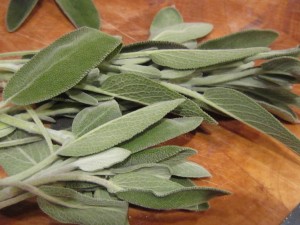
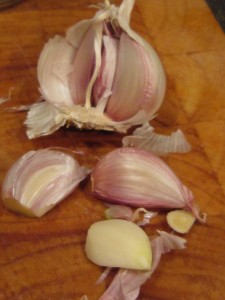
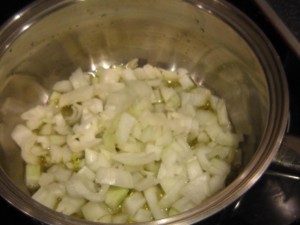
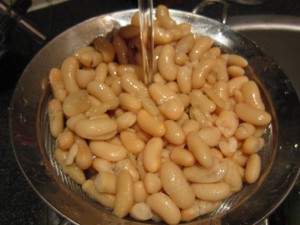
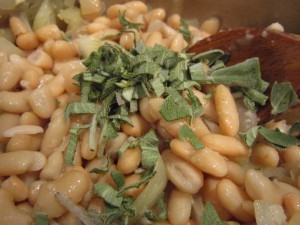
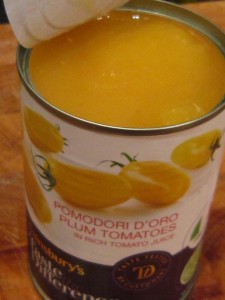
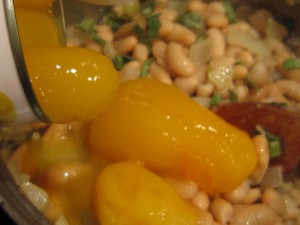
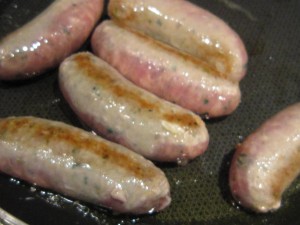
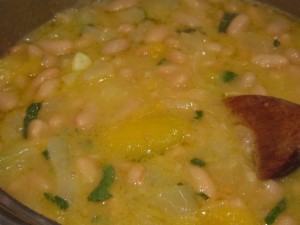

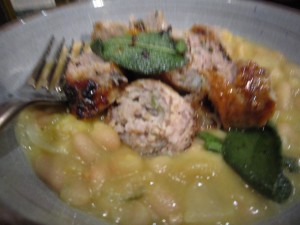
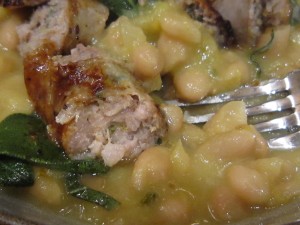
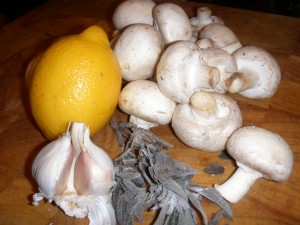
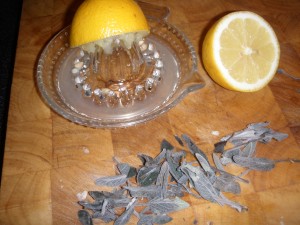
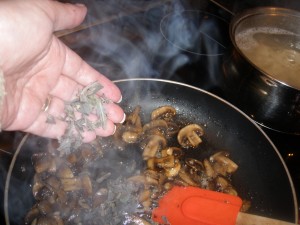
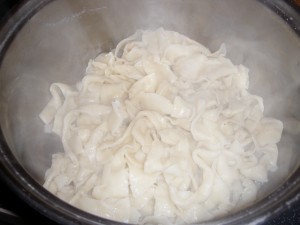
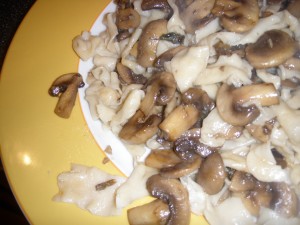
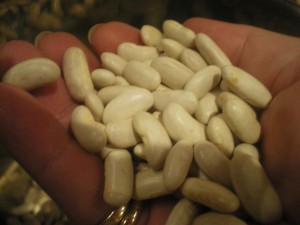
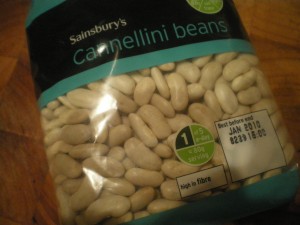
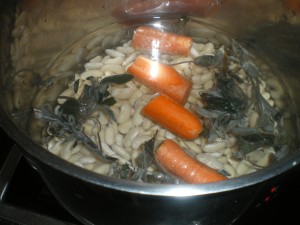
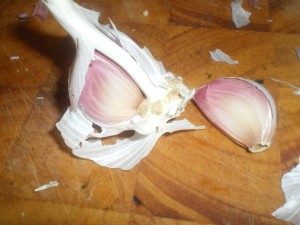
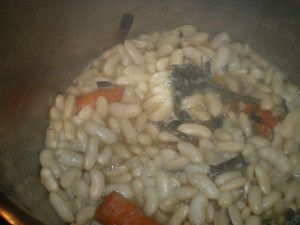
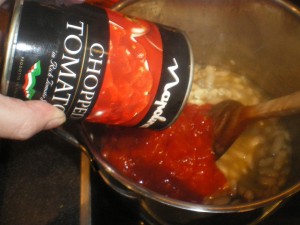
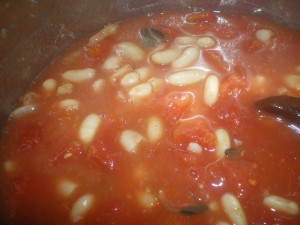
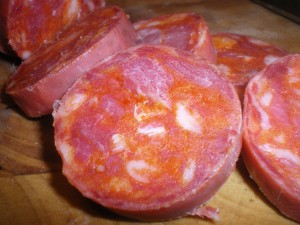
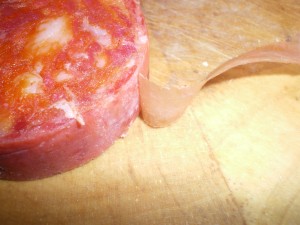
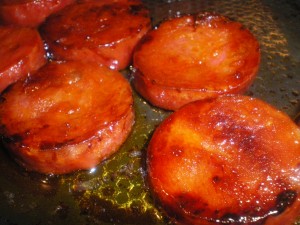
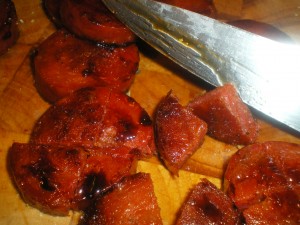
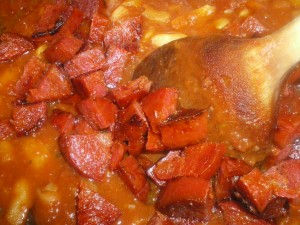
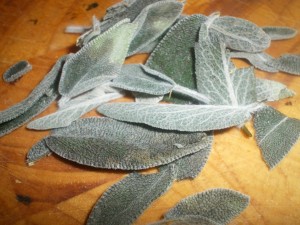
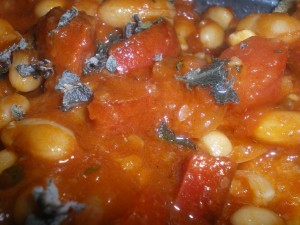
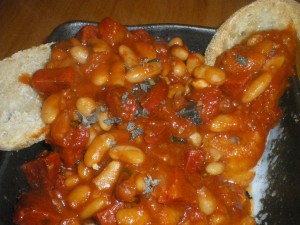
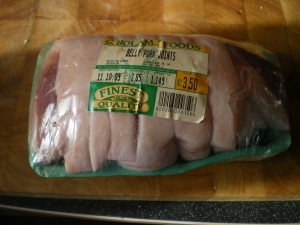
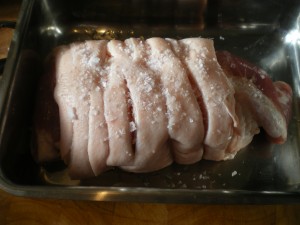
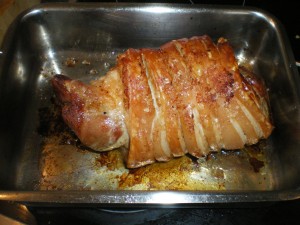
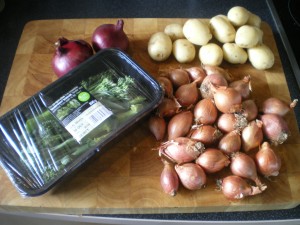
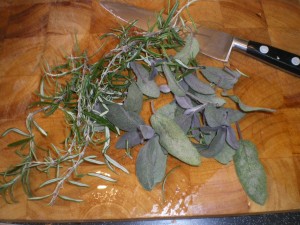
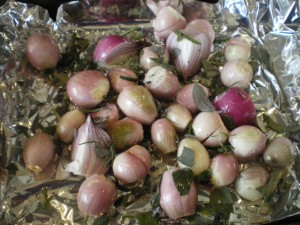 … put some foil over the top and put that in the oven as well. Long slow cooking alongside the meat would make the shallots cook down to a lovely soft sweetness……
… put some foil over the top and put that in the oven as well. Long slow cooking alongside the meat would make the shallots cook down to a lovely soft sweetness……